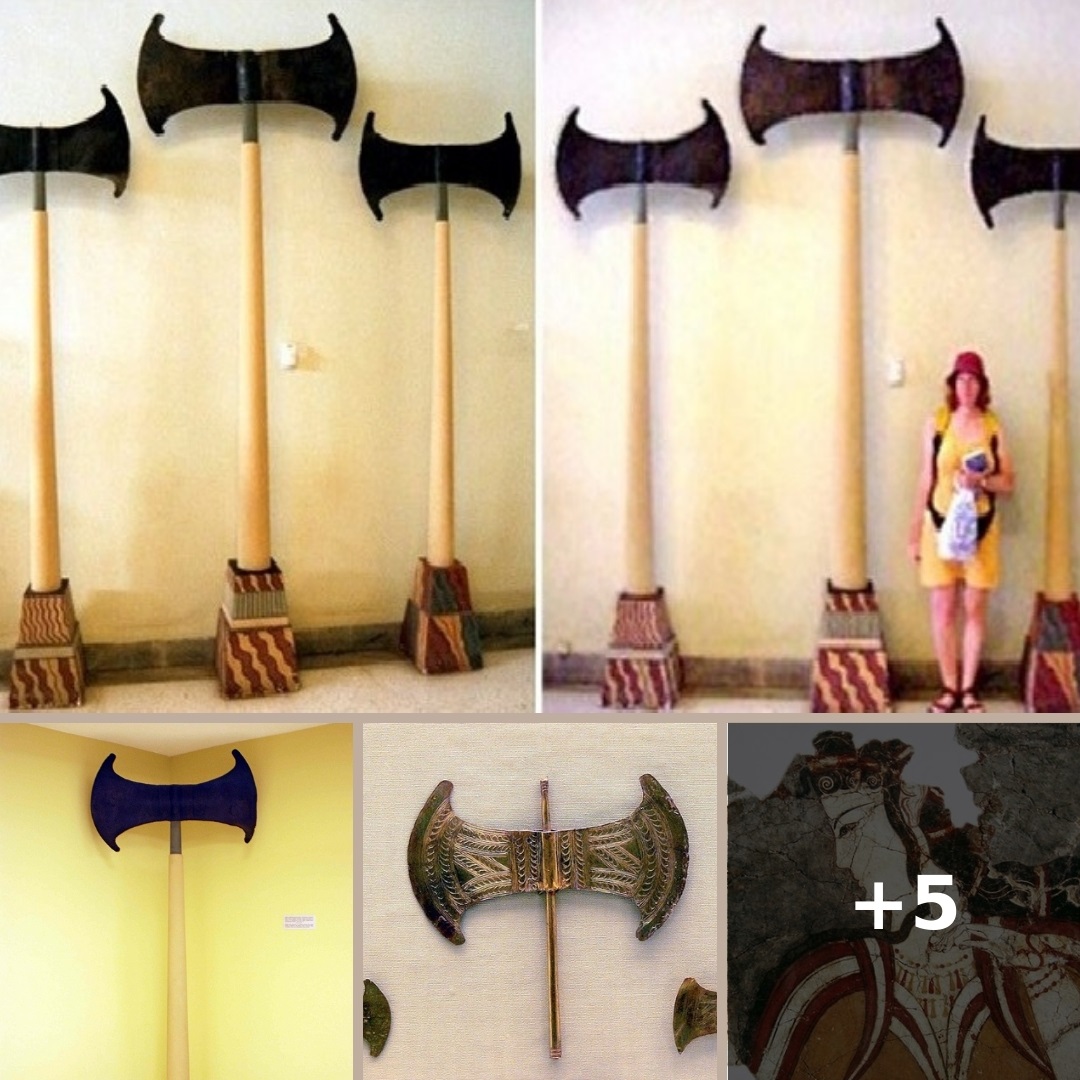To find such an axe in the hands of a Minoan woman would suggest strongly that she held a powerful position within the Minoan culture.
Some ancient artifacts are truly puzzling. They are so large in size and heavy that it’s impossible to even consider that they could have been used by normal-sized human beings.
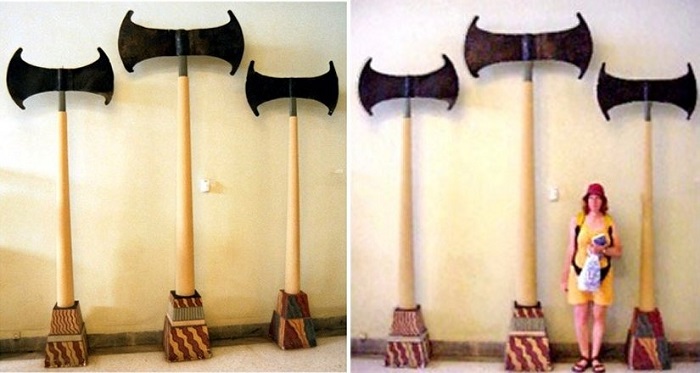
So, what was the purpose of these ancient giant axes? Were they merely produced as symbolic ceremonial objects or used by beings of giant stature?
Axes that are larger than humans cannot be used in battles or serve as agricultural tools.
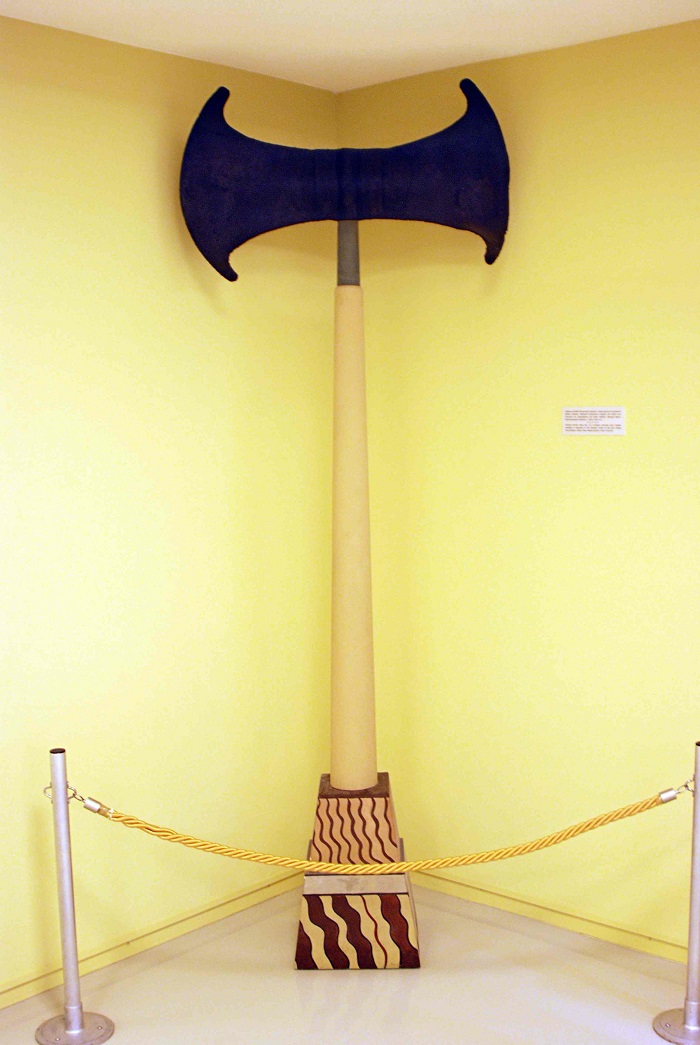
Archaeological Museum of Herakleion contains a unique collection of ancient objects that were discovered during excavations carried out in all parts of Crete including the archaeological sites of Knossos, Phaistos, Gortyn and many others. Among the objects, we come across double axes unearthed at “Minoan Megaron” at Nirou.
The Minoans who were a mysterious, advanced and one of the oldest Bronze Age civilizations of Europe named the double axe -“labrys”.
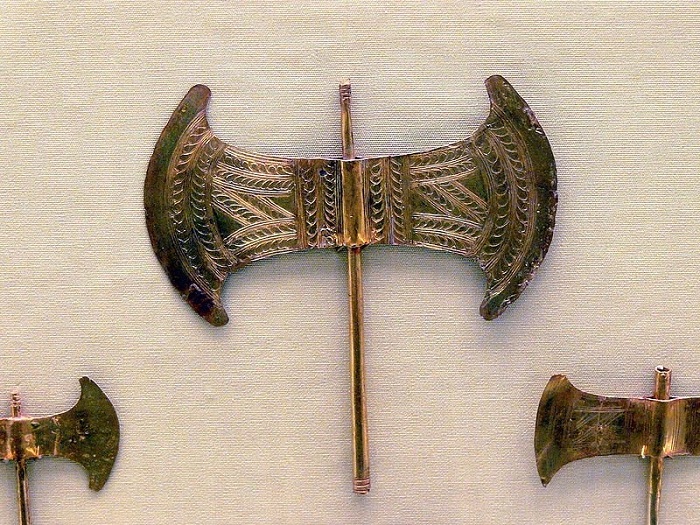
Labrys is the term for a symmetrical double-bitted axe originally from Crete in Greece, one of the oldest symbols of Greek civilization. Before labrys became symbolic objects, they functioned as a tool and hewing axe.
The Minoans appeared to have possessed remarkable technologies; one of them was the creation of tiny, wonderful seals, which were skillfully carved out of soft stones, ivory, or bone. This intriguing ancient civilization produced sophisticated lenses and these ancient people were in many ways much ahead of their time.
So, it’s only fair to ask why such intelligent people would produce giant axes that were of no use to ordinary, normal-sized humans?
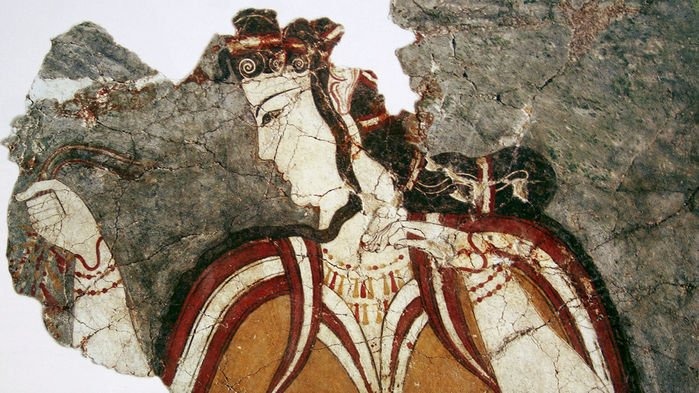
Some scholars have suggested that the word labyrinth may originally have meant the “house of the double axe”. Experts on symbols think the goddess of the double-axe presided over the Minoan palaces, and especially over the palace of Knossos.
The double axes date to the Second Palace and Post-Palace periods (1700 – 1300 BC).
The fact that these ancient axes are very large, does not prove that they were wielded by giants. It’s a possibility, but it can also be as the museum and other sources claim, they were just votive or worshipful objects.
